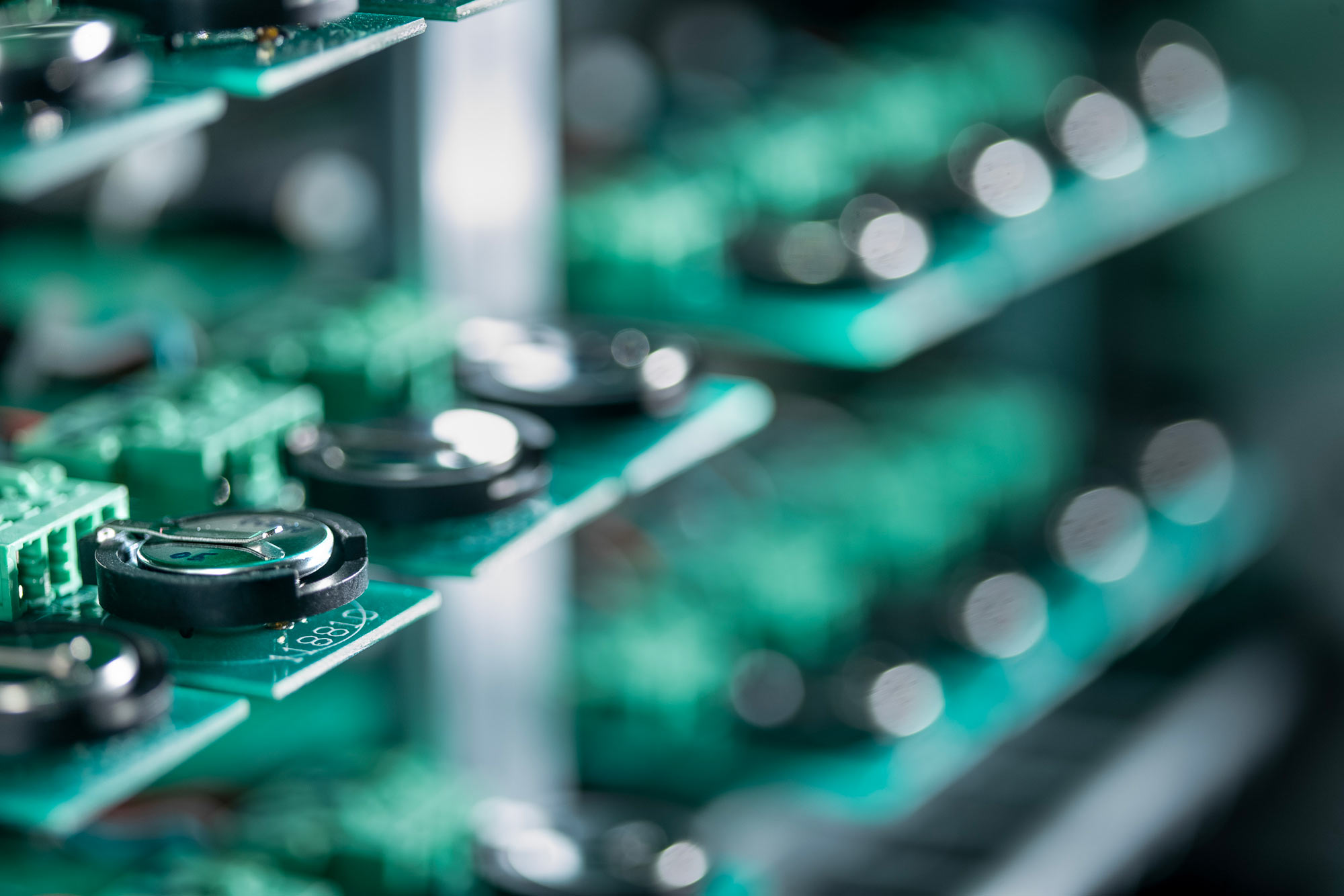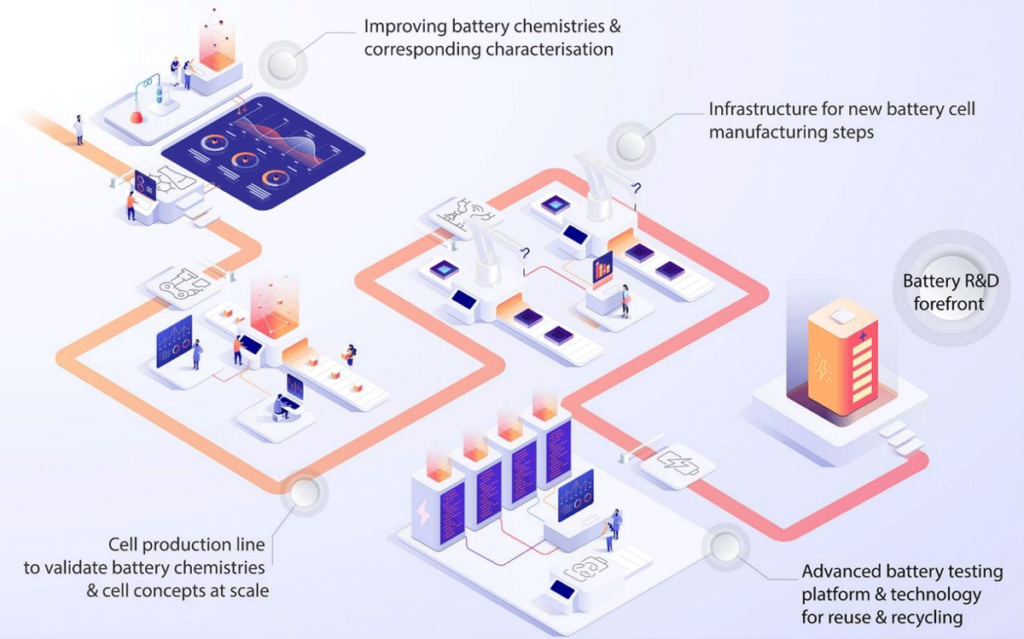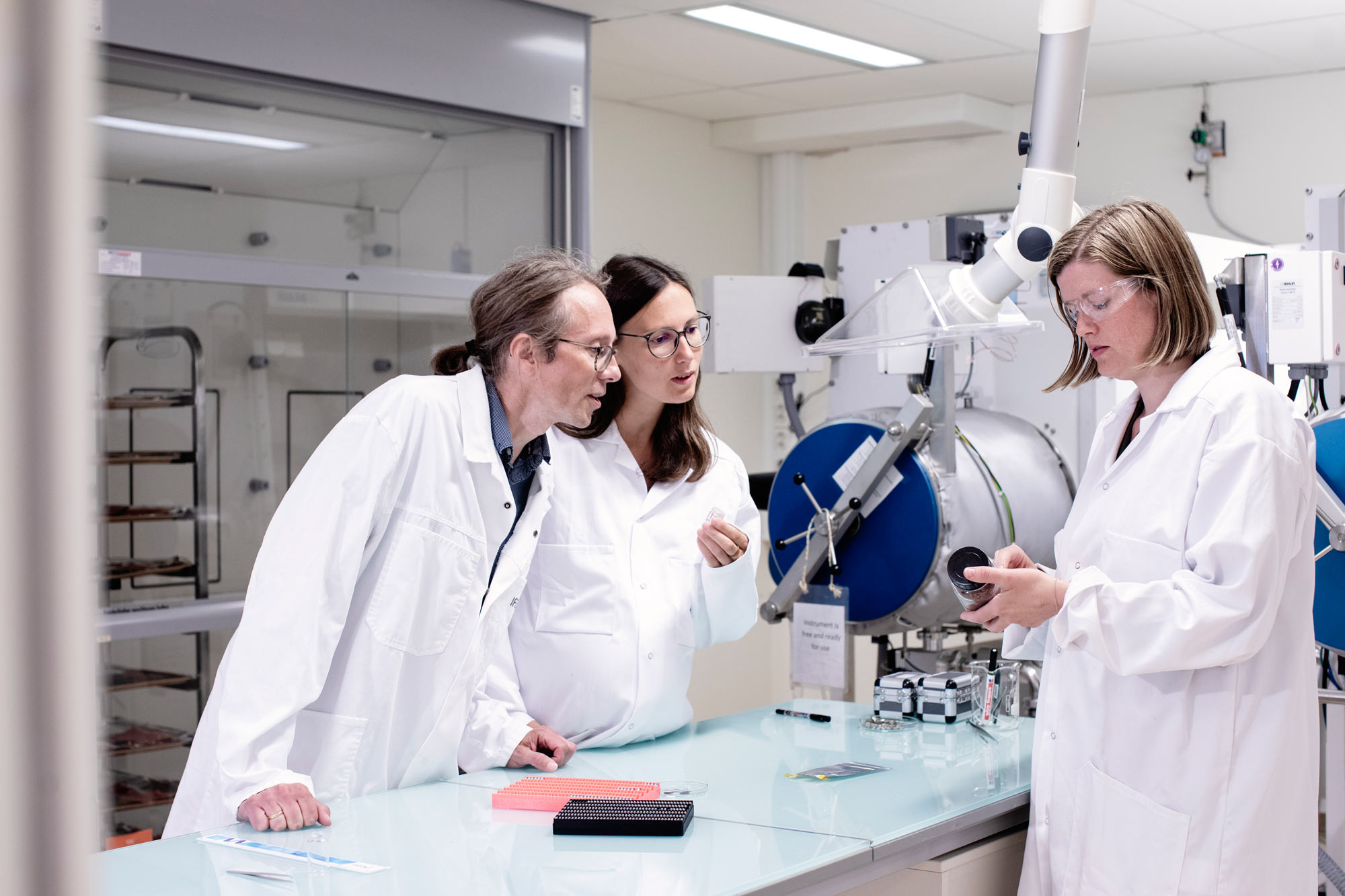Why NABLA?
The Norwegian Advanced Battery Laboratory is a national state-of-the-art infrastructure for battery research. The infrastructure will expand and unite the research efforts conducted by major battery research actors in Norway.
The main objective of the NABLA centre is to serve the Norwegian battery industry and advance Norwegian research community; expanding competence, delivering training for future researchers and increasing International visibility in the field of battery science.
National importance and relevance

Increasing the international visibility
By providing an access to the state-of-the-art laboratories to Norwegian research organizations and industries NABLA contributes to the education and training of a new generation of highly qualified specialists in battery technology supporting the worldwide transition to the emission-free economy.
It is anticipated that this infrastructure will complete the gaps in the existing facilities across the country and will help to increase the international visibility of Norwegian battery actors.
Mitigation of the current global climate crisis, through the transition to carbon-neutral solutions, requires a tremendous effort in development and implementation of new energy technologies and policies. A transition to renewable energy production is crucial and is closely interlinked with development of energy storage technologies as a key element of the future energy systems.

There is still ample room for improvement of state-of-the-art Li-ion batteries (LIBs): reducing costs and environmental footprints and improving the lifetime.
It is imperative that new battery materials and concepts are validated in full cells and at scale, and that new cell production processes are explored in-depth. More knowledge is also needed to establish proper second-life strategies and develop recycling processes.
Significant efforts will be devoted to the development of new toolboxes (theoretical and experimental) in order to accelerate the design of new batteries, with an open approach to battery chemistries.
EU has recognized the urgency of establishing a strong battery industry in Europe. Consequently, the European battery industry has been identified as a strategic value chain for the EU, with a predicted market potential in excess of €250 billion by 2025 and a need for 20-30 gigafactories in the region.
In order to transition from laboratory scale to gigafactory production, it is imperative that appropriate research infrastructure is established to support this growing industry.
The strengthened research efforts and need for significant expansion of the research infrastructure are strongly supported by the Norwegian industry. In the report “Grønne Elektriske Verdikjeder”, launched by NHO in August 2020, the battery value chain is identified as one of six important areas with great potential for industrial and economic growth in Norway in the next decades. Particularly materials development and production, battery cell production as well as recycling and second life applications are market segments where Norway has the opportunity to capture significant shares.
Norwegian maritime actors have for years been in the forefront with respect to integration of battery packs in ships, and the process industry is now devoting significant efforts into expanding their market towards the LIB value chain. One example is the Norwegian chemical giant Elkem, which recently announced the construction of a plant for production of battery-grade graphite for LIBs. In addition, there are several new manufacturing industrial initiatives. These include recently established battery cell production companies: Beyonder, Freyr and Morrow. In addition, Panasonic, Equinor and Hydro just announced their strategic partnership to explore potential for Norwegian battery business.
Roadmap and necessary infrastructure needed to propel Norway to the international forefront of battery R&D.

Though world-leading in terms of electrification in the transport sector, Norway still does not have a strong history in either battery research or manufacturing. It does, however, boast raw materials producers, a rapidly growing industry in maritime transport electrification and gigafactory initiatives. For these initiatives to succeed against strong international competition, the Norwegian research community needs state-of-the-art R&D infrastructure and world class competence across the whole value chain.
Currently, Norwegian researchers benefit from high quality advanced infrastructures such as NORTEM, NORFAB, NICE and RECX. However, these need to be complemented with advanced equipment tailored for studies of battery materials and interphases in batteries.
Furthermore, research infrastructure for battery production is needed in view of the emerging industries. There is also a need for expanding the system integration facilities to the levels relevant for applications and establish the facilities for evaluation of batteries for second life. Development of new technologies is key for Europe, and for Norway.
The Battery 2030+ roadmap and strategy list a number of priority areas requiring further development: New materials, Alternative Chemistries, Environmentally Friendly materials and processing, Safety, New Battery Concepts, Advanced Manufacturing, Recycling and Second life.
Excellence and long-term goals
- To strengthen the battery research community and industry within Norway by ensuring that state-of-the-art equipment for battery research and development and necessary skills are readily available.
- To improve the quality of research currently conducted by partners through strategic equipment investments to produce high quality research by filling the gaps in the present infrastructure to enable research in priority areas listed above.
- To ensure future growth of battery research and development in Norway by envisioning research infrastructure which will allow to develop materials and batteries of the future.
- To increase the international visibility of Norwegian battery research and promote Norway as an attractive destination for battery scientists and industry.
- Establish a common meeting place for battery related activities across the academic, industrial and public sectors.
- Document a high level of usage of the infrastructure by MSc and PhD students (>40/yr), PostDocs and researchers (>30/yr) and external companies (>5/year), which will provide a high level of scientific output: publications and patents (>50/yr).
- Deliver training for the next generation battery researchers by providing access and training at state-of-the-art equipment.
Quality and uniqueness of the research infrastructure
Several research groups and institutions in Norway are extensively involved in battery-related research and development providing partial infrastructure for the basic needs. However, the previously available infrastructure was incomplete and did not cover the full battery value chain. A major expansion was necessary in order to adequately respond to the growing demands within battery chemistry, validation of battery materials and manufacturing technologies for battery cells at sufficient scale, testing, implementation and recycling/reuse.

NABLA is designed to strengthen the battery research in Norway and maximise the benefits from existing and planned infrastructure. To ensure the most efficient use of existing and proposed infrastructures, and due to specific needs for the battery research and the volatile nature of certain battery chemistries, the NABLA consortium has coordinated its efforts with other infrastructure initiatives.
Thus, NABLA is the outcome of merging three battery related pre-proposals (sketches) and is constructed to fill the voids in the present battery landscape in Norway; NABLA is considered a crucial tool for national industry and research.